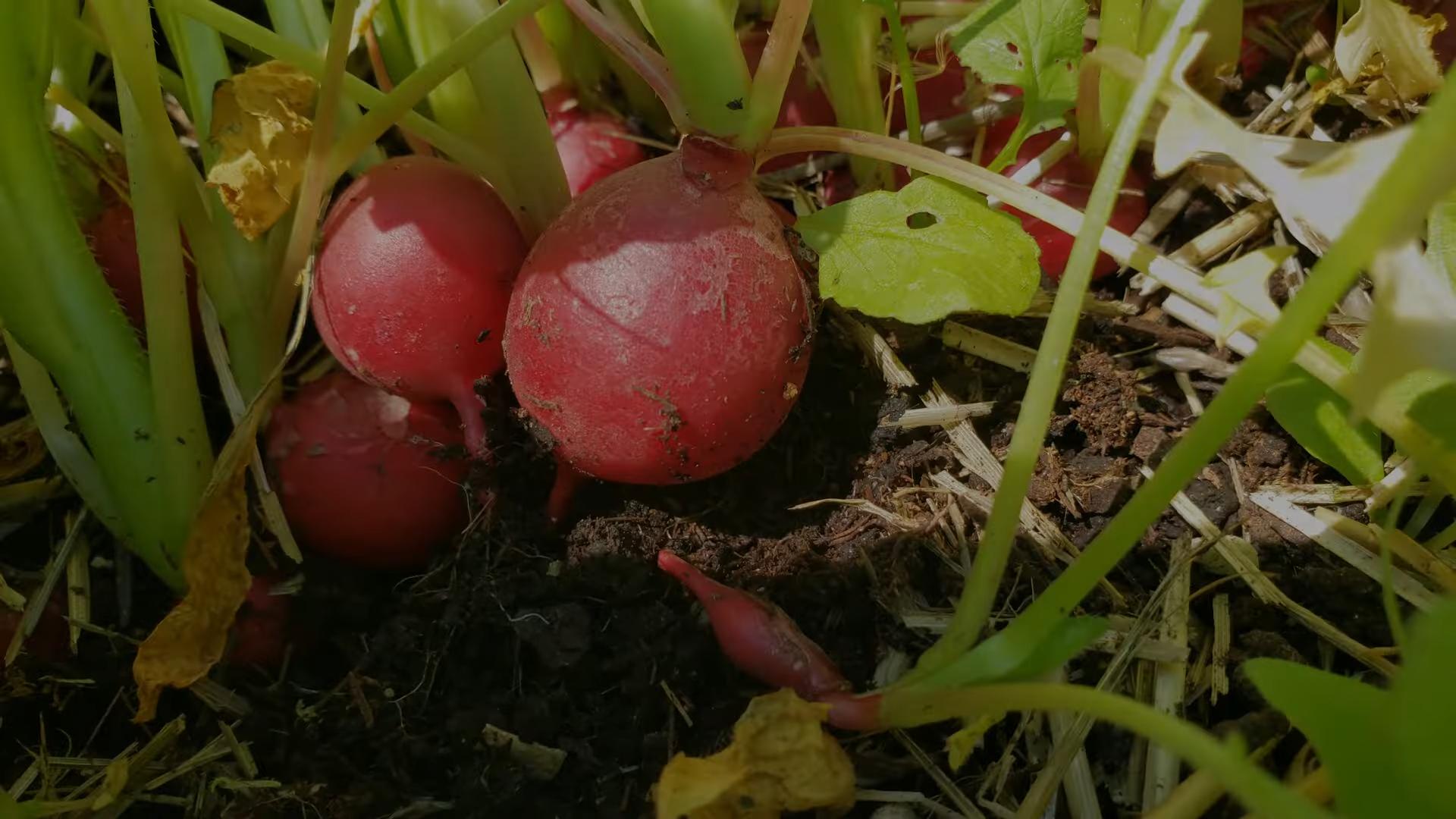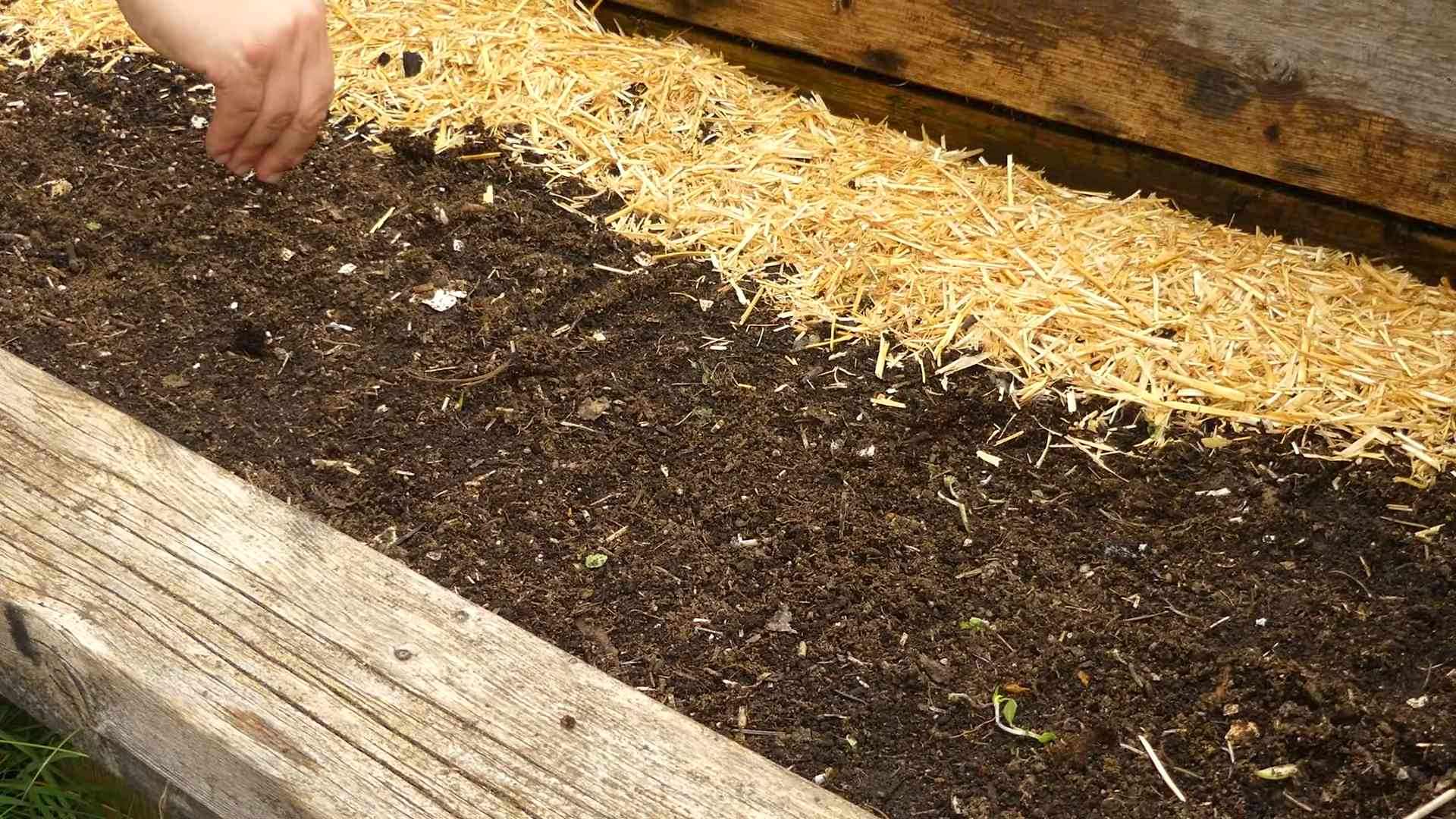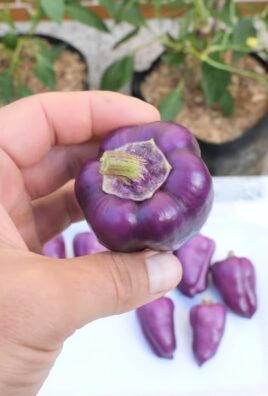Growing Radishes Indoors might sound like a challenge, especially if you’re used to seeing them pop up in outdoor gardens. But trust me, it’s totally achievable, and even quite rewarding! Imagine having a constant supply of crisp, peppery radishes right at your fingertips, no matter the weather outside. Forget trekking to the grocery store – fresh, homegrown radishes can be a reality, even in the smallest of apartments.
Radishes have a surprisingly long and interesting history. Originating in Asia, they were cultivated even before the pyramids were built! The ancient Greeks and Romans highly valued them, not just for their taste, but also for their medicinal properties. Now, centuries later, we’re bringing this ancient vegetable indoors, adapting to modern living while still enjoying the simple pleasure of growing our own food.
Why should you learn this DIY trick? Well, for starters, growing radishes indoors is incredibly space-efficient. If you’re short on outdoor space, or live in an area with harsh winters, indoor gardening is the perfect solution. Plus, it’s a fantastic way to introduce kids to the joys of gardening and teach them about where their food comes from. But more importantly, having fresh radishes readily available means you’re more likely to incorporate them into your diet, adding a healthy and delicious crunch to your salads, sandwiches, and snacks. So, let’s dive in and discover the secrets to successfully growing these peppery delights within the comfort of your own home!

Growing Radishes Indoors: A Beginner’s Guide
Hey there, fellow gardening enthusiasts! Ever dreamt of enjoying crisp, peppery radishes straight from your own indoor garden, even when the weather outside is frightful? Well, dream no more! Growing radishes indoors is surprisingly easy and rewarding. I’m going to walk you through everything you need to know to get started, from choosing the right variety to harvesting your delicious crop. Let’s get our hands dirty (figuratively, of course, since we’re indoors!).
What You’ll Need
Before we dive into the nitty-gritty, let’s gather our supplies. Here’s a checklist of everything you’ll need to successfully grow radishes indoors:
* Radish Seeds: Choose varieties specifically suited for indoor growing. More on that later!
* Containers: Opt for containers that are at least 6 inches deep.
* Potting Mix: A well-draining potting mix is crucial.
* Grow Lights (Optional but Recommended): Radishes need plenty of light, so grow lights can be a game-changer, especially during winter.
* Watering Can or Spray Bottle: For gentle watering.
* Seed Starting Tray (Optional): For starting seeds before transplanting.
* Fertilizer (Optional): A balanced liquid fertilizer can boost growth.
Choosing the Right Radish Variety
Not all radishes are created equal, especially when it comes to indoor growing. Some varieties are better suited for containers and shorter growing seasons. Here are a few of my favorites:
* Cherry Belle: A classic, quick-growing variety that’s perfect for beginners. They mature in about 22 days.
* French Breakfast: These elongated radishes have a mild flavor and mature in around 25 days.
* Easter Egg: A colorful mix of red, pink, purple, and white radishes that mature in about 28 days.
* Sparkler: Another fast-growing variety, ready in about 22 days, with a mild flavor.
Important Tip: Always check the seed packet for specific growing instructions and days to maturity.
Step-by-Step Guide to Growing Radishes Indoors
Alright, let’s get planting! Follow these steps, and you’ll be enjoying fresh radishes in no time.
1. Prepare Your Containers:
* First, make sure your containers are clean and have drainage holes. Good drainage is essential to prevent root rot.
* Fill the containers with your well-draining potting mix, leaving about an inch of space at the top.
* Gently pat down the soil to create a firm but not compacted surface.
2. Sowing the Seeds:
* Radishes don’t like to be transplanted, so I usually sow the seeds directly into the containers.
* Space the seeds about 1 inch apart and ½ inch deep. You can use your finger or a pencil to make small holes.
* If you’re using a seed starting tray, sow one seed per cell.
* Cover the seeds with a thin layer of potting mix.
3. Watering:
* Gently water the soil until it’s evenly moist but not soggy. A spray bottle is great for this.
* Keep the soil consistently moist throughout the germination process.
4. Germination:
* Radish seeds typically germinate in 3-7 days.
* Keep the containers in a warm location (around 60-70°F or 15-21°C).
* If you’re using a seed starting tray, place it under grow lights once the seedlings emerge.
5. Thinning (If Necessary):
* Once the seedlings have their first true leaves (the second set of leaves), you might need to thin them out.
* If the seedlings are too close together, gently remove the weaker ones, leaving about 1-2 inches between each plant. This will give the remaining plants enough space to grow.
6. Light:
* Radishes need at least 6 hours of sunlight per day.
* If you don’t have enough natural light, use grow lights. Position the lights a few inches above the plants and keep them on for 12-14 hours a day.
* Rotate the containers regularly to ensure even light exposure.
7. Watering (Continued):
* Water regularly, keeping the soil consistently moist.
* Avoid overwatering, as this can lead to root rot.
* Check the soil moisture by sticking your finger about an inch into the soil. If it feels dry, it’s time to water.
8. Fertilizing (Optional):
* If you want to give your radishes a boost, you can fertilize them every 2-3 weeks with a balanced liquid fertilizer.
* Follow the instructions on the fertilizer label.
* Be careful not to over-fertilize, as this can lead to leggy growth.
9. Temperature:
* Radishes prefer cool temperatures, around 60-70°F (15-21°C).
* Avoid placing the containers near heat sources, such as radiators.
10. Pest Control:
* Indoor radishes are generally less susceptible to pests than outdoor radishes.
* However, keep an eye out for aphids or other common indoor pests.
* If you spot any pests, you can try spraying them with insecticidal soap or neem oil.
Harvesting Your Radishes
Now for the best part – harvesting! Radishes are typically ready to harvest in 20-30 days, depending on the variety.
* Check for Size: The radish roots should be about 1 inch in diameter.
* Pull Gently: Gently pull the radishes from the soil. If they’re difficult to pull, you can loosen the soil around them with a small trowel.
* Wash and Enjoy: Wash the radishes thoroughly and enjoy them fresh! You can eat them raw in salads, slice them on sandwiches, or roast them for a sweeter flavor.
Pro Tip: Harvest radishes as soon as they’re ready. If you leave them in the ground too long, they can become woody and bitter.
Troubleshooting
Even with the best intentions, things can sometimes go wrong. Here are a few common problems you might encounter and how to fix them:
* Leggy Growth: This is usually caused by insufficient light. Make sure your radishes are getting enough sunlight or grow light exposure.
* Root Rot: This is caused by overwatering. Make sure your containers have good drainage and avoid overwatering.
* Bitter Radishes: This can be caused by leaving the radishes in the ground too long or by growing them in hot weather. Harvest radishes as soon as they’re ready and try to keep the temperature cool.
* Failure to Germinate: This can be caused by using old seeds or by keeping the soil too dry. Use fresh seeds and keep the soil consistently moist.
Extending Your Harvest
Want to keep the radish party going? Here’s how to extend your harvest:
* Succession Planting: Sow a new batch of seeds every 1-2 weeks to ensure a continuous supply of radishes.
* Choose Different Varieties: Experiment with different varieties of radishes to find the ones that grow best in your indoor environment.
Final Thoughts
Growing radishes indoors is a fun and rewarding experience. With a little bit of care and attention, you can enjoy fresh, peppery radishes all year round. So, grab your seeds, get your hands dirty, and start growing! Happy gardening!

Conclusion
So, there you have it! Growing radishes indoors is not only possible, but it’s also surprisingly simple and incredibly rewarding. Forget those bland, store-bought radishes that lack that peppery zing. With just a few basic supplies and a little bit of patience, you can cultivate a continuous supply of fresh, crisp radishes right in your own home, regardless of the weather outside.
Why is this DIY trick a must-try? Because it puts you in control. You control the soil, the light, and the watering, ensuring the best possible flavor and texture. You avoid the pesticides and herbicides often used in commercial farming. And, let’s be honest, there’s something deeply satisfying about nurturing a plant from seed to harvest. It’s a connection to nature, a small act of self-sufficiency, and a delicious way to add a healthy crunch to your meals.
But the fun doesn’t stop there! Feel free to experiment with different radish varieties. ‘Cherry Belle’ is a classic choice, but why not try ‘French Breakfast’ for a milder flavor or ‘Black Spanish’ for a bolder, more pungent bite? You can also play around with companion planting. Try interplanting your radishes with carrots; the radishes will help break up the soil, making it easier for the carrots to grow. Or, plant them near lettuce to deter pests.
Consider using different containers too. While a standard pot works perfectly well, you could also repurpose old containers like plastic tubs or even milk cartons. Just make sure they have adequate drainage. For a more aesthetically pleasing setup, explore vertical gardening options. A tiered planter or a hanging basket can add a touch of greenery to your indoor space while maximizing your radish yield.
Don’t be afraid to get creative with your lighting as well. While a sunny windowsill is ideal, you can supplement with grow lights, especially during the darker winter months. Experiment with different light spectrums to see what works best for your radishes.
Ultimately, the best way to learn is by doing. So, grab a packet of radish seeds, gather your supplies, and get started! We are confident that you will find the process enjoyable and the results delicious.
We truly believe that mastering the art of growing radishes indoors is a game-changer for any home gardener or food enthusiast. It’s a simple, sustainable, and satisfying way to enjoy fresh, flavorful radishes year-round.
Now, we want to hear from you! Have you tried growing radishes indoors before? What were your experiences? What tips and tricks did you learn along the way? Share your photos, stories, and advice in the comments below. Let’s create a community of indoor radish growers and learn from each other. Happy gardening!
Frequently Asked Questions (FAQ)
1. What kind of soil is best for growing radishes indoors?
Radishes thrive in well-draining, loose soil that is rich in organic matter. A good potting mix specifically formulated for vegetables is an excellent choice. You can also create your own mix by combining equal parts of potting soil, compost, and perlite or vermiculite. The compost provides essential nutrients, while the perlite or vermiculite improves drainage and aeration. Avoid using heavy garden soil, as it can compact and hinder root development. The ideal pH for radishes is between 6.0 and 7.0.
2. How much sunlight do indoor radishes need?
Radishes need at least 6 hours of direct sunlight per day to grow properly. A south-facing windowsill is usually the best location. However, if you don’t have access to enough natural light, you can supplement with grow lights. Fluorescent or LED grow lights are both good options. Position the lights a few inches above the plants and keep them on for 12-14 hours per day. Rotate your radish plants regularly to ensure even light exposure on all sides. Insufficient light can lead to leggy growth and poor root development.
3. How often should I water my indoor radishes?
Radishes need consistent moisture to grow quickly and develop crisp roots. Water them thoroughly whenever the top inch of soil feels dry to the touch. Avoid overwatering, as this can lead to root rot. Ensure that your containers have adequate drainage holes to prevent water from pooling at the bottom. During hot weather, you may need to water more frequently. A good rule of thumb is to check the soil moisture daily and water as needed.
4. How long does it take for radishes to grow indoors?
One of the great things about radishes is that they are fast-growing. Most varieties mature in just 3-4 weeks. The exact time will depend on the variety, growing conditions, and temperature. Warmer temperatures (around 60-70°F) will generally speed up growth. Keep an eye on your radishes and harvest them when the roots reach the desired size. Overripe radishes can become woody and bitter.
5. What are some common problems when growing radishes indoors and how can I fix them?
Several issues can arise when growing radishes indoors. One common problem is leggy growth, which is usually caused by insufficient light. To fix this, provide more light, either by moving the plants to a sunnier location or using grow lights. Another problem is root rot, which is caused by overwatering. To prevent root rot, ensure that your containers have good drainage and avoid overwatering. Pests, such as aphids and flea beetles, can also attack radishes. Inspect your plants regularly and treat any infestations with insecticidal soap or neem oil. Finally, if your radishes are not forming bulbs, it could be due to overcrowding or poor soil. Thin out the seedlings to provide more space and ensure that the soil is rich in nutrients.
6. Can I grow radishes indoors year-round?
Yes, you can absolutely grow radishes indoors year-round! Because you are controlling the environment, you are not limited by seasonal changes. Just be sure to provide adequate light, water, and nutrients. You may need to adjust your watering schedule depending on the humidity and temperature in your home. Succession planting is a great way to ensure a continuous harvest. Sow a new batch of seeds every 2-3 weeks to keep the radishes coming.
7. What are some creative ways to use my homegrown radishes?
Beyond simply adding them to salads, there are many creative ways to enjoy your homegrown radishes. You can roast them with olive oil and herbs for a sweet and savory side dish. You can thinly slice them and use them as a garnish for tacos or sandwiches. You can pickle them for a tangy and refreshing snack. You can even use the radish greens in salads or stir-fries. Don’t be afraid to experiment and discover your own favorite ways to use these versatile vegetables.
8. Are radish greens edible?
Yes, radish greens are absolutely edible and packed with nutrients! They have a peppery flavor similar to the roots, but slightly milder. You can use them in salads, stir-fries, soups, or pesto. Be sure to wash them thoroughly before using them. Choose young, tender greens for the best flavor and texture. Avoid eating greens from radishes that have been treated with pesticides.
9. How do I know when my radishes are ready to harvest?
The best way to determine when your radishes are ready to harvest is to check the size of the roots. Most varieties are ready to harvest when the roots are about 1 inch in diameter. You can also gently brush away some of the soil around the base of the plant to get a better look at the root. If the roots are the desired size, gently pull them out of the soil. If they are too small, give them a few more days to grow.
10. Can I save seeds from my indoor radishes?
While it’s technically possible to save seeds from radishes, it’s a bit more challenging indoors. Radishes are biennials, meaning they typically flower and produce seeds in their second year. To save seeds, you would need to overwinter your radish plants and allow them to flower the following spring. This can be difficult to do indoors, as radishes require specific temperature and light conditions to flower. Additionally, radishes are cross-pollinated, so if you are growing multiple varieties, the seeds may not be true to type. For best results, it’s generally easier to purchase fresh radish seeds each year.




Leave a Comment